Baz Macdonald heads to LA to see The Overwatch League at Blizzard Arena.
Do you remember the first time you went to the movies and heard the THX sound system intro? You know, that crescendo of sound that seemed to push you back in your seat with the sheer force of it?
Well, imagine that times about a thousand, and you will begin to understand what it is like to sit in the audience at an international eSports event - in this case, The Overwatch League at Blizzard Arena in Los Angeles.
For starters, you are seated in front of the most mammoth screen imaginable - it is 13,000 pixels wide, and takes up the entirety of the Arena wall, as well as a section of the adjoining walls. The effect, is that you are literally surrounded by the action.
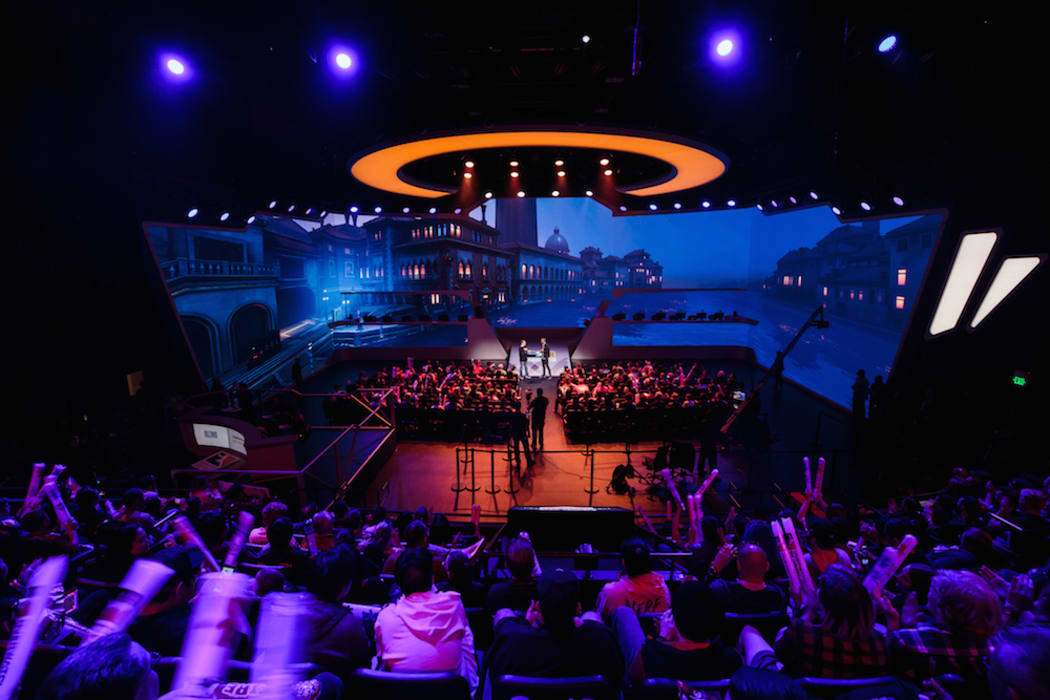
The wraparound screens at the Blizzard Arena. Photo: Robert Paul for Blizzard Entertainment
And upon this mind-melting display, twelve looming figures engage in a frenzied battle - blasting each other with rockets, gunfire and all kinds of other artillery. Under such an onslaught of visual stimuli, it is initially difficult to understand what is happening at all. But, after a moment, your eyes adjust, and you are sucked into this pastel coloured world in which these two teams fight for domination.
Adding to the sensory overload is the accompanying cacophony. Layered on top of the blasts, pings and whoomphs of this battle, two commentators narrate the chaos at lightning speed and a crowd of fans roars every time a foe is vanquished.
With all of this going on, it can be easy to forget that at the bottom of your sightline, seated across the stage, are the competitors themselves. There is a certain psychological disconnect between the scale and fantasy of the game on the screens, and the relatively tiny humans that make this action possible.
In fact, when you really stop to think about what eSports are, it enters the realm of the surreal. What you are watching is the stroke of a key or the movement of a mouse translated into the actions of larger-than-life fantastical avatars. Yet, due to brilliance of the programmers who created the games, these movements take on the purpose of competition for these professional players, the fans, and the 35 million casual players of Overwatch online.
No one could have guessed this is where the internet would lead us, and yet here we are - eSports has become a billion-dollar industry and is only getting bigger. So, let's peek behind the curtain into this weird and wonderful world of professional eSports.
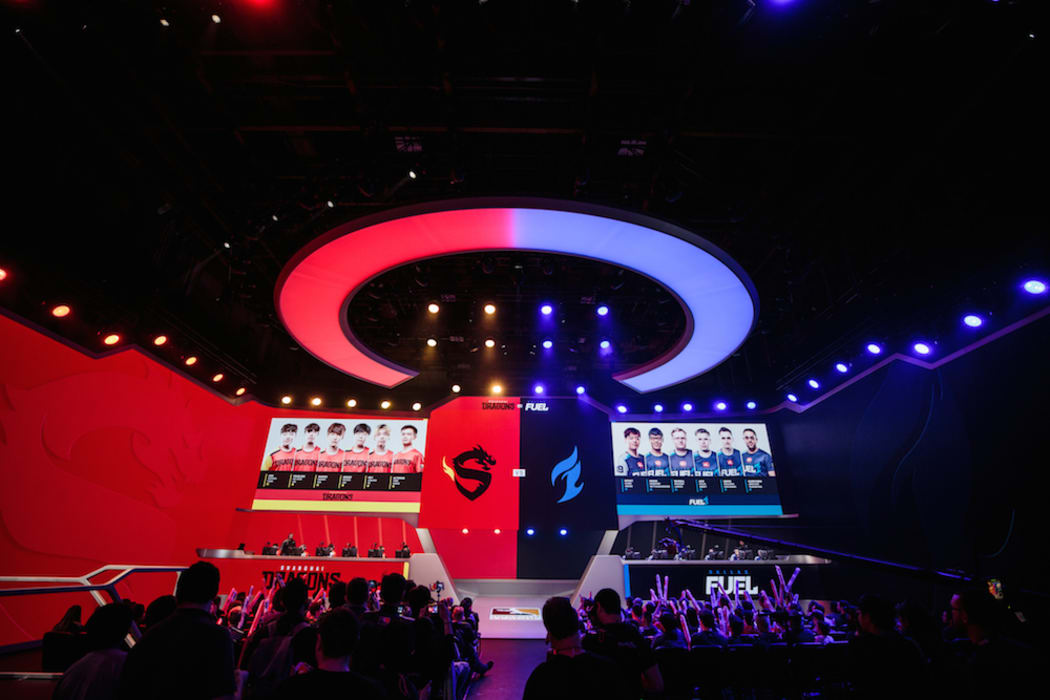
The players of the Shanghai Dragons and the Dallas Fuel prepare for a match. Photo: Robert Paul for Blizzard Entertainment
THE PLAYERS
Since the inception of eSports, there has been a rhetoric in the mainstream that it's 'not a sport'. But regardless of how you frame it, competing at this level has a definite physical strain for these players, and an undeniable mental stress.
Watching the competitor's hands while they play is dizzying - as they dart around the keyboard and fling the mouse around at absurd speeds. In appearance, the number of inputs they make per second could only be compared to that of a pianist playing Tchaikovsky. At this level of play, competitors need their hands to stay as nimble as possible, which is why between matches you can see them rubbing their hands, wrists and forearms down with heat packs.
But while it is easy for some to scoff at the physical demands of these players, these dissenters would have trouble scoffing if they understood the mental acuity they are performing at. I once had it explained to me like this:
Imagine if you removed all the physical limitations from a game of football, so that if it usually takes 30 seconds to run across the pitch, it now takes five seconds. Imagine how significantly that would change the strategy and tactics for players - decisions they would normally have seconds to make, now become milliseconds.
When you strip away all the fantasy and mayhem of an eSport, there are the same types of rules and strategy as you find with any sport - but because of the relative lack of physical limiters, these players must mentally perform in similar ways to this football hypothetical.
You get a sense of this speed when you hear players at this level communicate - it sounds like an alien language, with each player barking words at a speed unintelligible to an untrained ear. These players train with each other for up to eight hours a day, not only refining their skills and strategies, but also their team communication - which is what allows them to speak to each other at these blistering speeds.
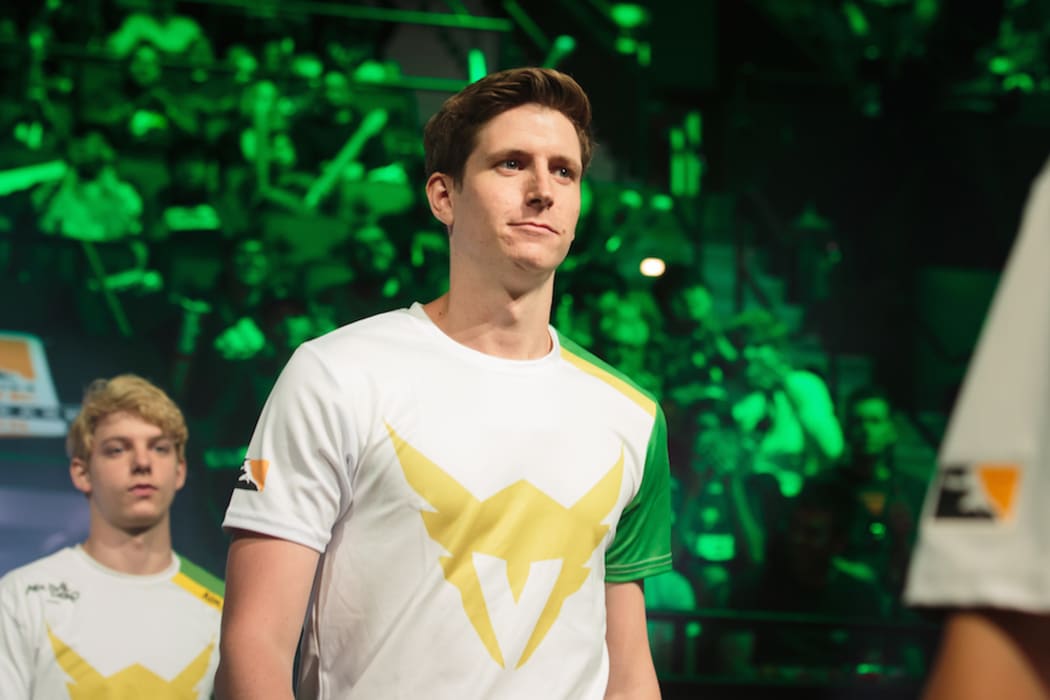
Adelaide-born professional eSports player Scott Kennedy, AKA Custa, enters the arena for the Los Angeles Valiant match. Photo: Robert Paul for Blizzard Entertainment
Currently, there are no New Zealand players in the Overwatch League, so we have to make do cheering on our Australian brethren. One of the most successful Australian players is Scott Kennedy, AKA Custa, who plays for the Los Angeles Valiant.
Custa started playing competitive games seriously when he was fifteen, but it wasn't until he was at University that he began to think about seriously pursuing it professionally.
"I was sitting in a test, and I remember thinking 'I am going to fail this test'. I started thinking about what I was going to do - and that's when I decided to drop out and give this a go."
Probably not the decision his parents wanted, but a financially viable option nonetheless. Custa, and every other of the 121 players in the Overwatch League Roster, receive a base salary of almost NZ$70,000 a year - plus there are bonuses for success in the competition, as well as other forms of income, such as sponsorship.
Yet, despite this success, generally these players are super down-to-earth and humble people who are just stoked that they get to play games for a living.
"Most of the time you are just going to work, and in that mindset of practicing every day. And then, every now and again it hits you that hundreds of thousands of people are watching you," Custa says.
"It is a surreal experience - because, we all came from just kids playing video games and trying to have a good time."
THE FANS
Undoubtedly, you will have an image in your mind of what an eSport enthusiast might look like. While there is certainly someone who matches that description in the crowd, I think most people would be surprised to see just how diverse the audience is.
For a start, there is easily a 50/50 split of men and women in the crowd, and people of all ages and races. A common sight at the arena is parents with their kids - with a lot of the parents cheering along as much, if not more, than their kids.
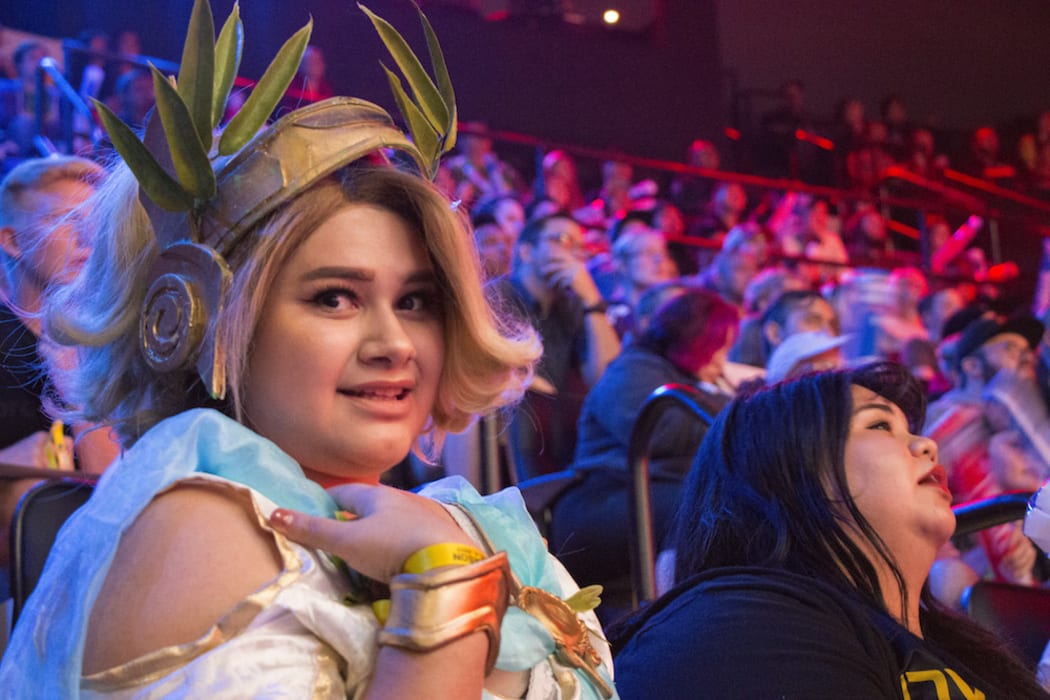
A fan dressed as Overwatch character Mercy at Blizzard Arena. Photo: Baz Macdonald
Observing these fans can be as fascinating as the battle itself. While a portion are enthusiastic fans, dressed in team jerseys and red in the face from cheering on their team, a portion take their support a step further by adorning themselves in elaborate cosplay of characters in the game. That is a level of commitment you rarely see in other sports - I mean, I'm yet to see someone dress as Ritchie McCaw at an All Blacks game.
While every match in this league is available online, people come from all over the world to attend them in person. Speaking with fans lining up outside, I met a couple from Colorado who had just been married and had come to Overwatch League as part of their honeymoon - this was their third trip to the Arena this year.
What I found fascinating, was that although the husband Roy played Overwatch himself, his wife Rebecca and her friend Vanessa didn't play the game at all, but considered themselves simply fans of the eSport. This is an important breakthrough point for any spectator sport - after all, not every rugby fan plays the game. But up until now, the majority of eSports were only watched by people who played the game also.
"I am a huge football fan," Rebecca said. "That is how I got into Overwatch League - because it reminded me a lot of football in the way the players have to work together."

Overwatch League fans, Roy Elliott, Rebecca Elliott and Vanessa Rhine. Photo: Baz Macdonald
THE BELLY OF THE BEAST
An operation of this scale requires an incredible amount of effort behind the scenes, with not only the production of the arena spectacle, but also the online broadcast all over the world.
What is striking about this production, is the overwhelming enthusiasm of everyone involved -- even the PR representatives gushed about "what a dream come true" it is to work for Blizzard, the company who created Overwatch. It doesn't feel like artifice, but a real love and devotion to the games they support. Touring around the live operation rooms, the operators laughed and cheered along with the action of the games while they worked.
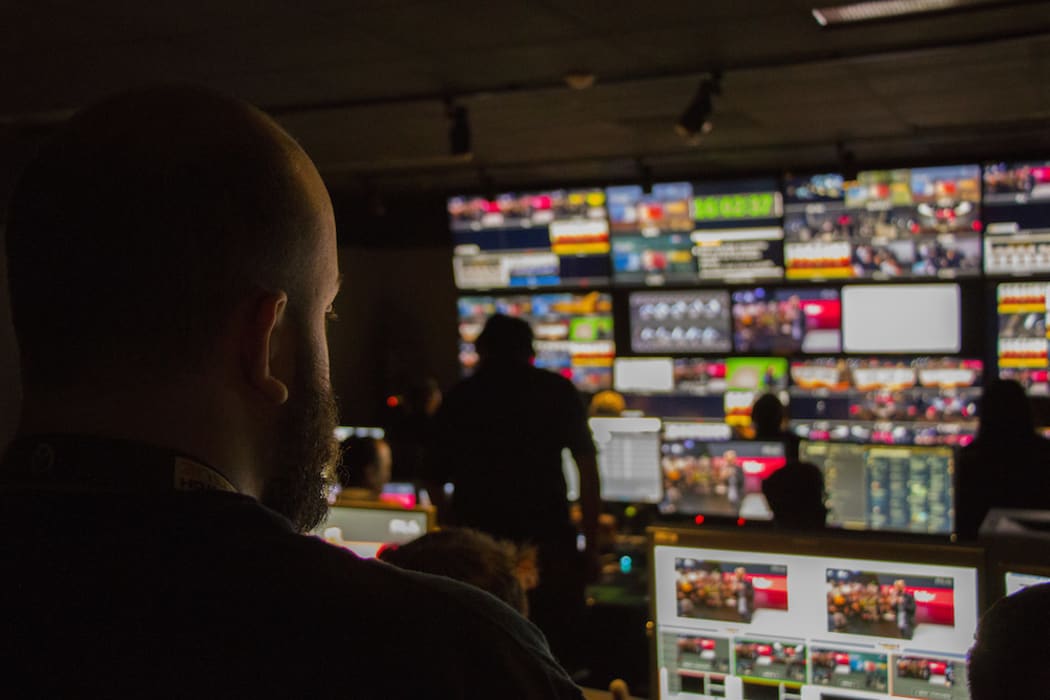
The Overwatch League control room. Photo: Baz Macdonald
The arena's senior technical director Peter Emminger says it is necessary to have the operations staff be fans of the game - not only so that they understand the intricacies of Overwatch for broadcast, but also to match the enthusiasm and fervor of the rest of the team.
As a fellow gamer and tech-nerd, their enthusiasm is understandable. I mean, not only are they watching video games for a living, but they are also working inside a technical mecca - with some of the most sophisticated broadcast, server and display setups in the world.
But this arena would be sure to enthuse any entertainment buff. It is located right in the middle of Burbank, just down the street from the Disney lot on one side, and Warner Bros. on the other. The arena space itself is a part of entertainment history, having been the place in which Johnny Carson filmed The Tonight Show for thirty years.
Also, as our guide walked us down the corridor, he casually pointed out a sound stage and asked us to be quiet as Days of Our Lives was filming.
The fact that this eSports arena is situated right in the heart of the entertainment capital of the world is a fitting reminder of how our world is changing. What once was radio, moved to TV, then film, and now digital. eSports is a bastion of our digital age - simultaneously demonstrating the technical prowess of the software development, online infrastructure and production industries -- all in one insane and larger-than-life experience.
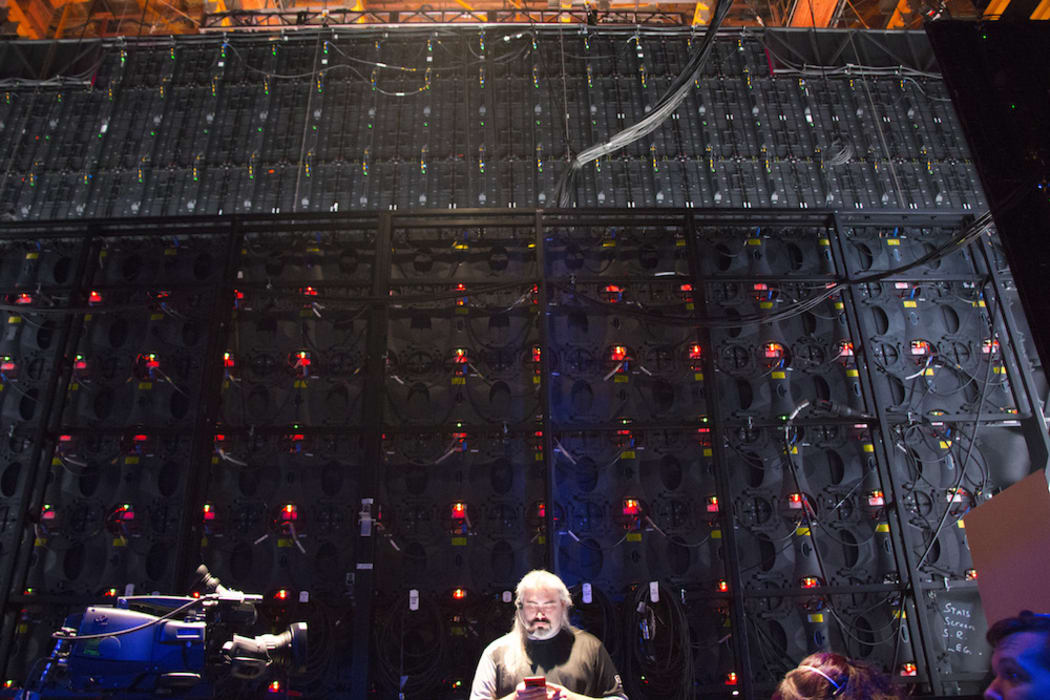
Blizzard Arena’s 13,000-pixel wide monitors from behind. Photo: Baz Macdonald

